
How to Improve Patient Engagement with Digital Health Tools
Digital health tools could change patient care dramatically. However, there's a big difference between what they could do and how much they're actually used. While nearly 90% of patients show interest in health tech, few actually adopt it. For instance, 90% of U.S. healthcare systems offer patient portals, but only 15% to 30% of patients use them.
This isn't because people aren't interested. Often, the problem lies in how these tools are designed and put into practice. Many digital health solutions prioritize the technology itself over the people who will use it. This leads to tools that aren't helpful, interesting, or simple to operate. To fix this, healthcare groups need to move past just offering technology. Instead, they should build solutions centered on what patients and clinicians truly need.
This article will look at what helps and hurts patient engagement, based on what the evidence shows. We'll also provide practical ways to design and use digital health tools that patients will genuinely want to use.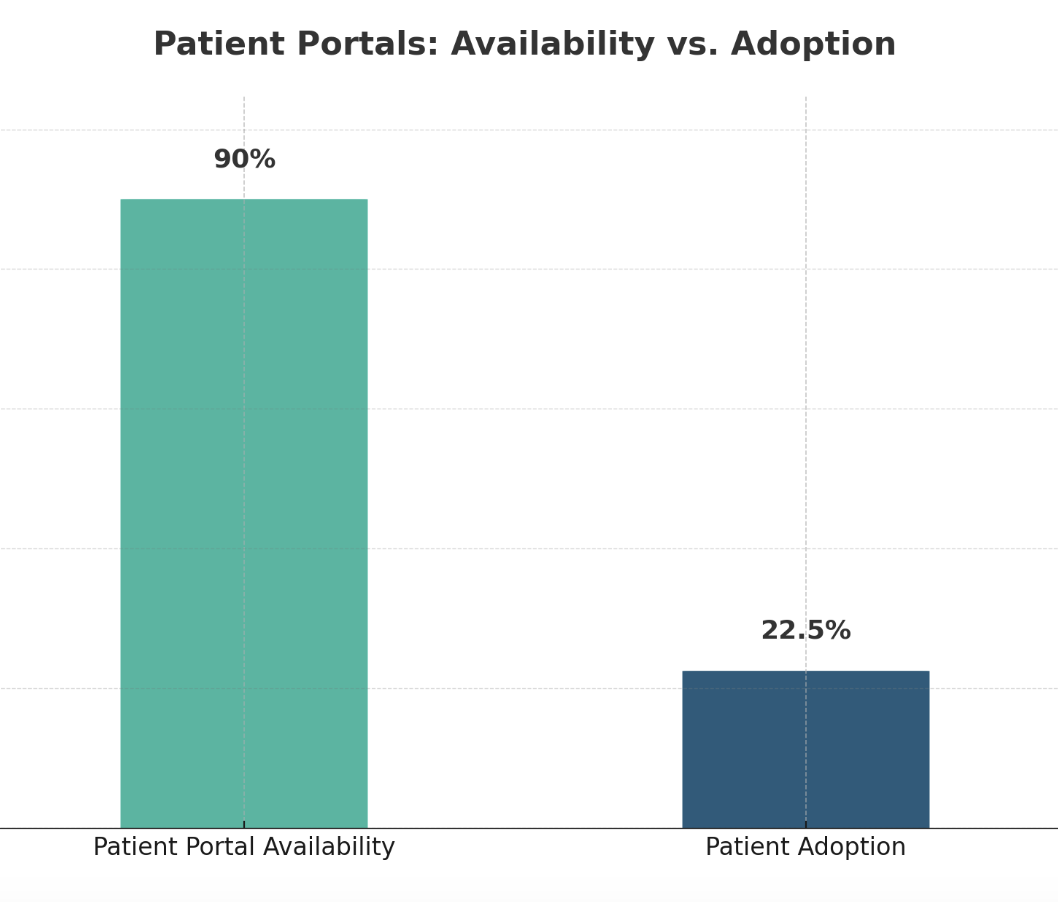
What makes digital health tools truly effective?
A digital health tool's success isn't about how complex its technology is. It's about how well it connects patients to managing their own health. A review in PEC Innovation looked at patients' views on these tools. It found three main things that make them work well: patient empowerment, self-management, and personalization.Patient Empowerment
Patients feel empowered when they have the information and power to influence their health choices. Digital tools help by letting them directly access medical records, doctor's notes, and lab results. When patients are well-informed, they can join in decisions more actively. They can also spot errors in their records and have more productive conversations with their providers. This feeling of control strongly encourages them to keep using the tools.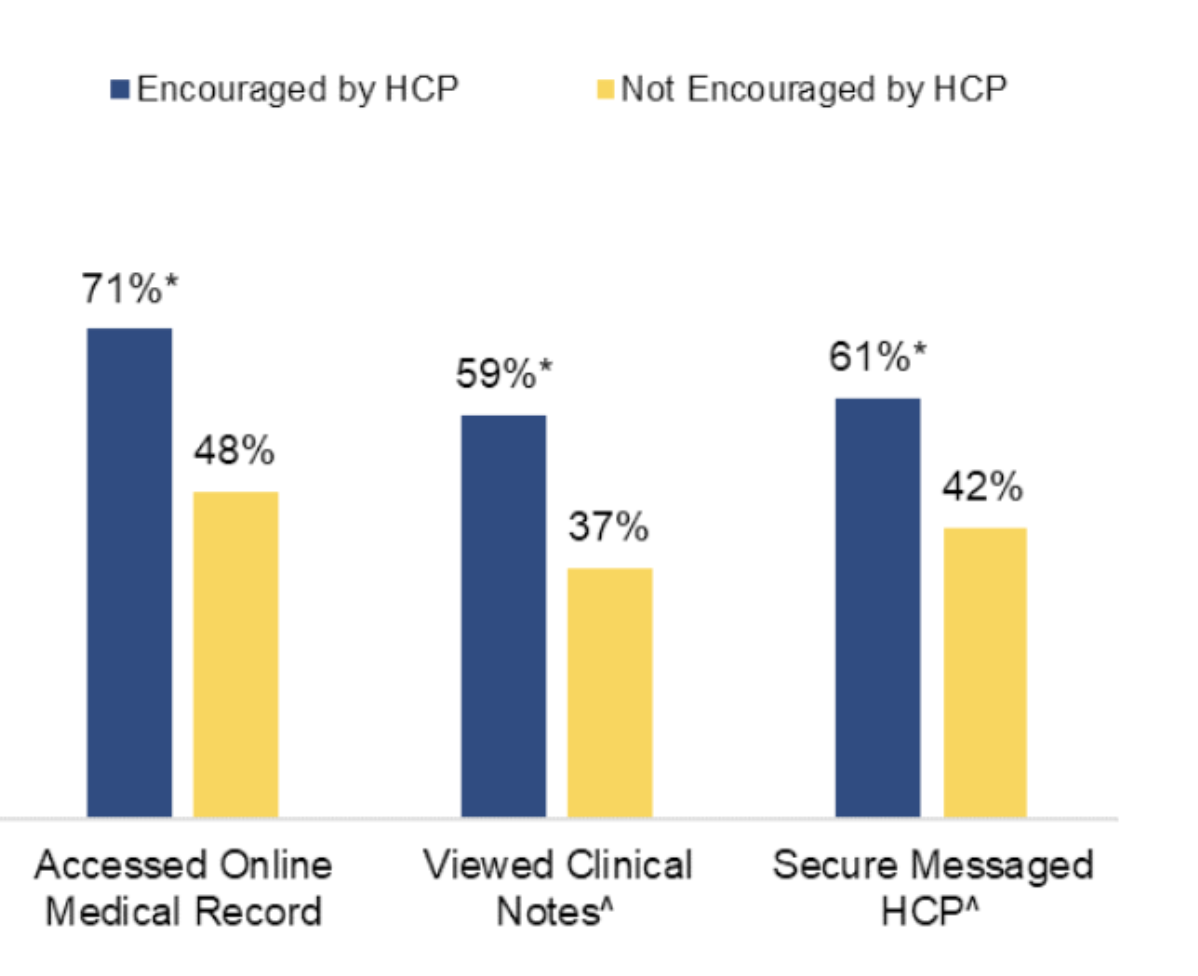 Rate of individuals accessing and using their patient portal by whether their health care provider (HCP) encouraged them.
Source: Assistant Secretary for Technology Policy
Rate of individuals accessing and using their patient portal by whether their health care provider (HCP) encouraged them.
Source: Assistant Secretary for Technology Policy
Self-Management
Good tools do more than just give information; they help patients actively manage their conditions. For instance, studies show that when patients can see their health data, like blood pressure trends or calorie intake, they become more motivated to manage their health. This visual feedback helps them grasp how their lifestyle choices truly affect them. It also builds a sense of independence and control over their health.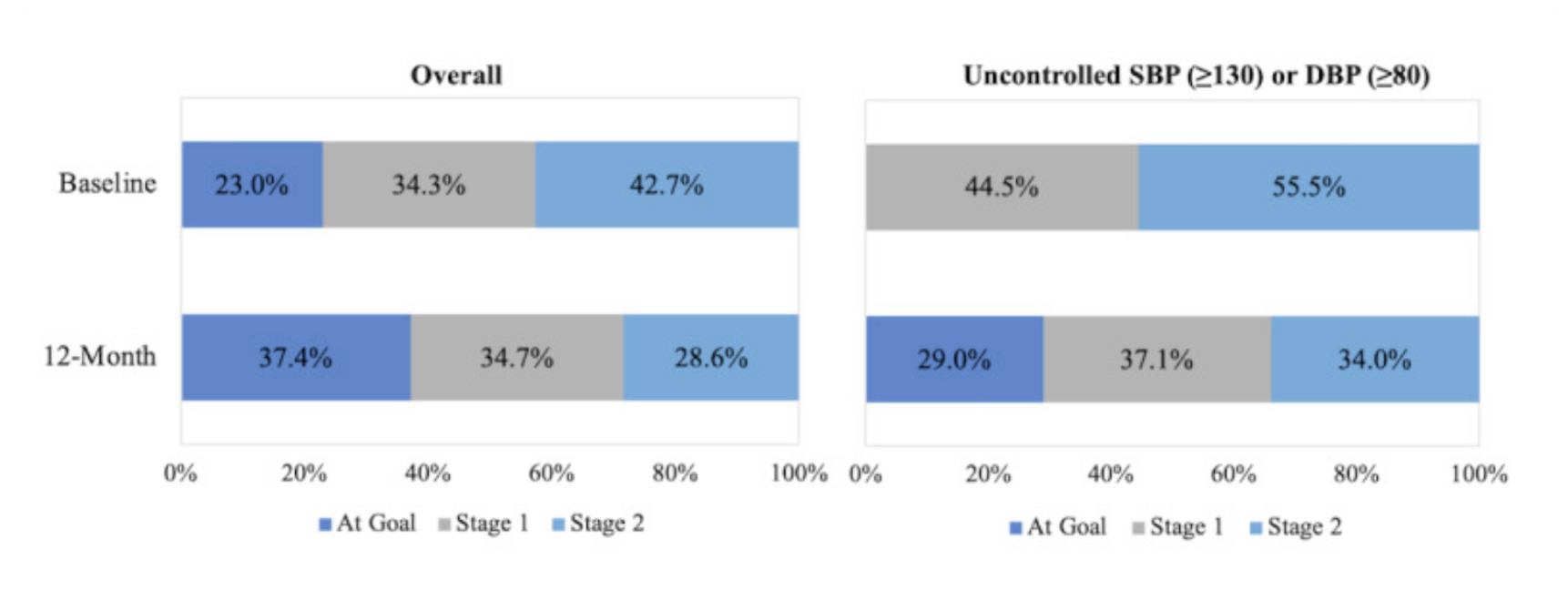 Long‑term digital self‑management works: 13% of Stage 1 and 9% of Stage 2 participants achieved blood‑pressure control within 12 months, and 15% of Stage 2 participants improved to Stage 1.
Source: PubMed Central
Long‑term digital self‑management works: 13% of Stage 1 and 9% of Stage 2 participants achieved blood‑pressure control within 12 months, and 15% of Stage 2 participants improved to Stage 1.
Source: PubMed Central
Personalization
A main reason patients stop using tools is that they often have a "one-size-fits-all" approach. Personalization means adjusting the digital experience to fit each person's unique needs, likes, and health conditions. Research shows that tailored content, like specific text message reminders or health tips, makes patients feel understood and greatly increases their involvement. In contrast, generic messages lose their attention and motivation over time. To truly personalize experiences, we must deeply understand what users need, often achieved through custom software development services that can build solutions tailored to specific patient populations.What are the biggest barriers to patient engagement?
Understanding why patients don't engage is just as vital as knowing what does get them involved. The problems aren't just technical. They come from issues with how easy tools are to use, how they fit into daily work, and human elements like trust.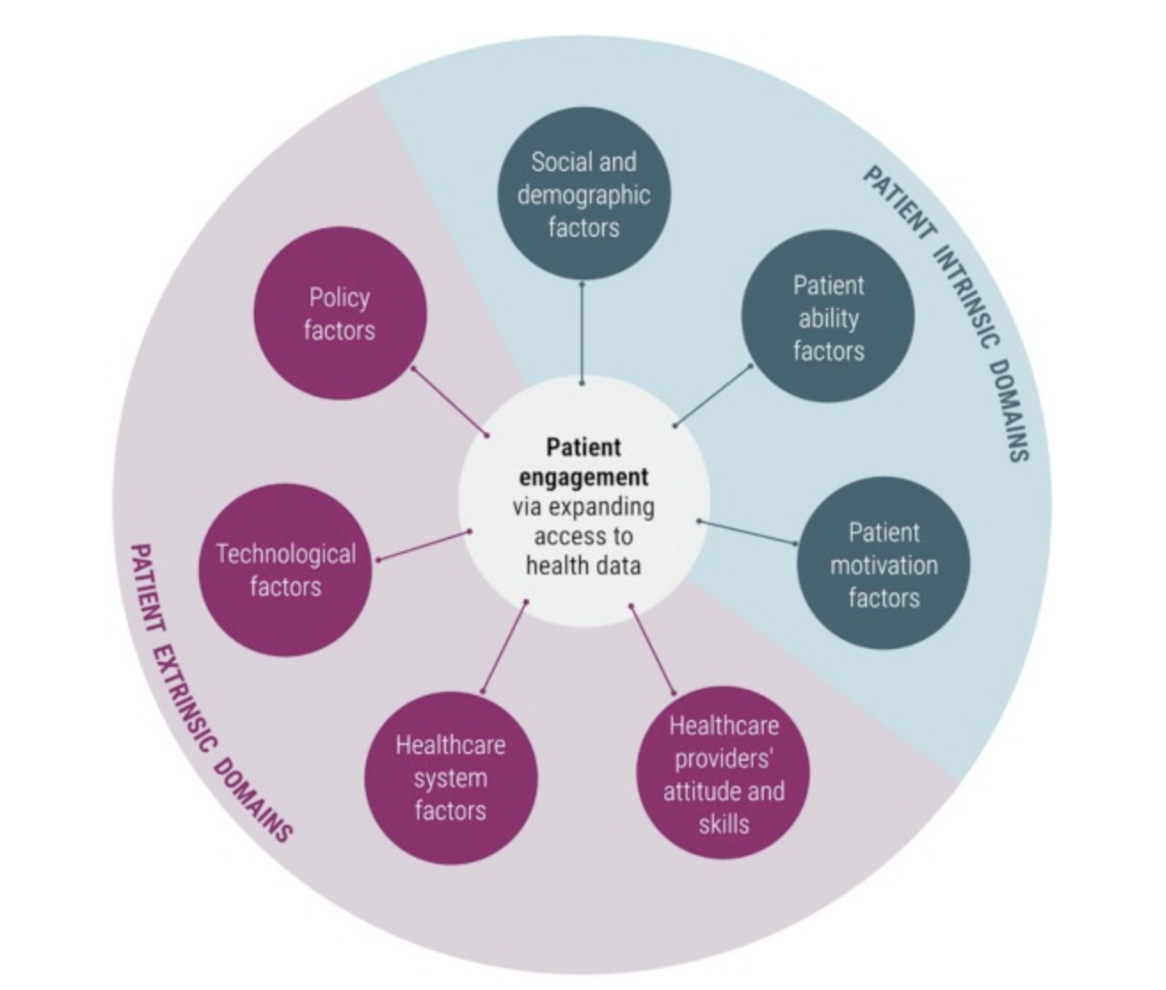 A range of internal and external factors that influence how patients interact with health tools.
Source: ScienceDirect
A range of internal and external factors that influence how patients interact with health tools.
Source: ScienceDirect
The Usability and Literacy Divide
One common barrier is when a tool is too complex for its users. This problem shows up in two main ways:- Digital Literacy: Many patients, especially older adults or those in rural areas, might feel uneasy or worried about using new tech. This creates a significant barrier to adoption.
- Health Literacy: Even tech-savvy patients can struggle with medical terms in their health records. Seeing lab results without clear explanations can cause a lot of worry and lead to needless doctor visits. For example, studies on widely-used platforms, such as the Department of Veterans Affairs (VA) patient portal, show that patients with lower health literacy consistently find the interface hard to use.
Design and Workflow Problems
The biggest problem is a core flaw in how these tools are made: they aren't designed around the user. Many tools are built without real input from the people who will use them daily – both patients and clinicians.- For Patients: If tools don't solve patients' main problems or aren't easy to understand, people quickly stop using them.
- For Clinicians: Clinicians are users too, and their experience matters a lot. We've seen with many electronic health records (EHRs) that if a tool is hard to fit into existing routines or adds to their paperwork, clinicians won't tell patients to use it. A major issue for providers is the worry of being swamped by patient messages without a clear system to handle them.
Privacy and Security Concerns
Trust is key in healthcare. Many studies show patients hesitate to use digital tools because they worry about data privacy. They fear their health information might be misused by third parties, like insurance companies or government agencies, potentially leading to discrimination. To build and keep patient trust, strong security and clear data rules are essential.How can we design and implement tools patients will actually use?
To get past these problems, we need a smart plan. This plan must put user needs at the core of the entire process, right from the first idea to ongoing support.Adopt a User-Centered Process
The best way to make tools that people will want to use is to include them from the start. This method, often called "user-centered" or "participatory design," sees patients and clinicians as equal partners in building the tools. Rather than making guesses, this approach uses qualitative research to truly understand what users need. This involves techniques like:- Focus Groups and Interviews: Start by talking with patients to figure out what the project should focus on and what their biggest frustrations are.
- Iterative Testing: Build early versions (prototypes) and test them often with users. This helps gather feedback and improve the design, content, and layout.
- Including Clinicians: Make sure doctors and other staff are part of the design team. This helps create tools that fit smoothly into their daily work without causing disruptions.
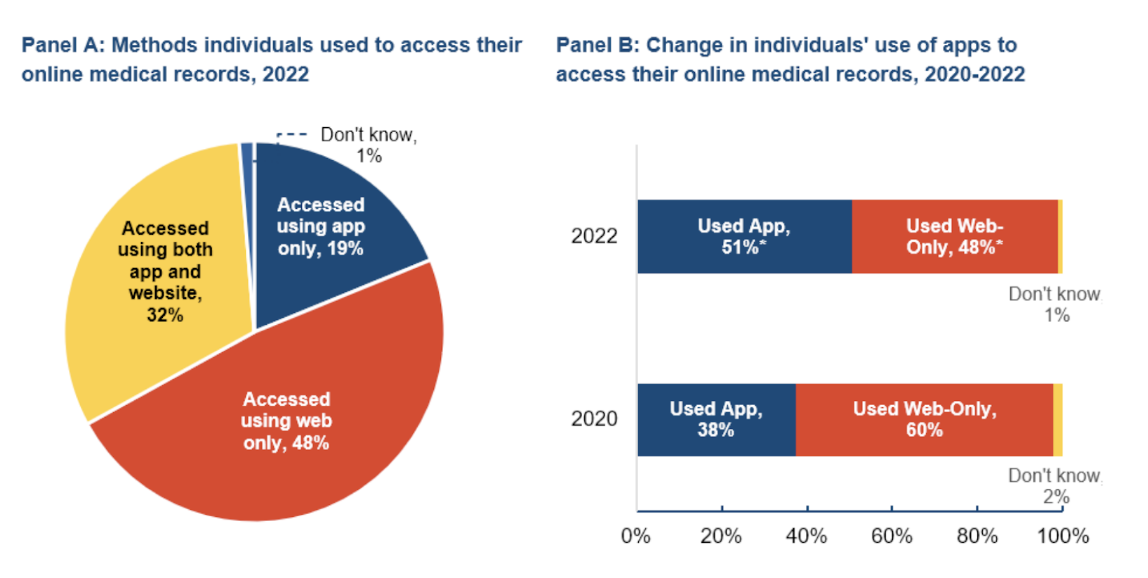 Methods individuals used to access their online medical records.
Source: Assistant Secretary for Technology Policy
Organizations can work with companies that specialize in digital health solutions to help with this teamwork. This ensures the final product is technically strong, genuinely usable, and truly valuable to its users.
Methods individuals used to access their online medical records.
Source: Assistant Secretary for Technology Policy
Organizations can work with companies that specialize in digital health solutions to help with this teamwork. This ensures the final product is technically strong, genuinely usable, and truly valuable to its users.
Focus on Practical Implementation Strategies
Even a well-designed tool can fail if it's not put into use carefully. Here are several important strategies, based on evidence:- Simplify Communication Channels: Patient portals are common, but many patients don't want to download yet another app or remember another password. Research from Pew Research Center shows that simple text messages for reminders and check-ins often lead to higher engagement.
- Optimize Content, Tone, and Timing: Messages should be brief, easy to grasp, and free of medical jargon. The right timing and frequency of messages are also crucial to prevent people from getting tired of alerts. Plus, an encouraging and understanding tone can ease patient worry and build trust.
- Combine Digital Tools with Human Support: Technology should add to human connection, not replace it. Studies show that programs including in-person help, like one-on-one training to sign up for a portal and learn to use it, lead to much higher usage rates.
Build for Seamless Integration and Security
For any digital tool to work well in a healthcare system, it needs to be secure and able to connect with other systems.- Integration with Existing Systems: A patient engagement tool must connect smoothly with your Electronic Health Record (EHR). This is why many new EHR platforms, like Epic and Cerner, have built patient portals such as MyChart right into their systems. This makes communication easier. Handling these connections often requires specialized DevOps help to manage the complex task of linking old and new systems.
- Security and Compliance: Protecting patient data is a must. Platforms need to be built to meet strict rules like HIPAA and GDPR.
- Use Data to Keep Improving: Putting tools into practice is a continuous effort. Organizations should use data and analytics to understand how people engage and respond. By tracking which content works, which ways of communicating are best, and where users stop engaging, you can make informed choices to always improve the patient experience.
What's next for patient engagement?
Digital health is changing, moving towards smarter, more proactive, and patient-focused systems. As technology progresses, a few major trends will reshape how patients engage with their health. Bringing together artificial intelligence and machine learning will allow for extremely personalized care. AI-powered platforms can look at patient data instantly to predict health risks, suggest lifestyle changes, and even adjust treatment plans automatically. This keeps patients more actively involved in their care. Wearable tech and remote monitoring devices will also get smarter. They will continuously collect data, giving instant feedback to both patients and providers. This steady stream of information means earlier help and better management of long-term conditions. On top of that, the growth of telehealth has forever changed what people expect for easy, remote care. Perhaps the most significant change is the growth of patient-led design, where patients become the innovators themselves. In the movement, #WeAreNotWaiting, people with type 1 diabetes built their own open-source systems for remote glucose monitoring, showing the power of tools when patients create them for themselves.How Kanda Can Help
Creating digital tools that are strong, reliable, and truly engaging needs a specialized partner who understands the details of healthcare. Kanda can help your organization turn patient engagement ideas into real solutions.- Build Engaging Tools with User-Centered Design: We work directly with patients and clinicians to build custom applications. These apps are easy to use, accessible, and meet real-world needs, which encourages long-term use.
- Deliver Personalized Patient Experiences: We create solutions that use patient data to build the tailored experiences modern users expect. From custom care plans within an app to smart reminders, we build platforms that make patients feel understood and cared for.
- Ensure Smooth Integration: Our deep knowledge of digital health solutions makes sure new tools fit perfectly into your current systems. We handle the complex parts of EHR integration, ensuring data moves securely and that clinician workflows are improved, not interrupted.
- Provide Actionable Insights with Data Analytics: We help you measure what truly matters. By setting up strong analytics, we enable you to track engagement and understand how users behave. This allows you to make decisions based on data, constantly improving your digital health tools.
Conclusion
The problem with patient engagement in digital health isn't a lack of technology. It's about a lack of understanding and empathy in how these tools are designed. To improve adoption and get better health results, we need to fundamentally change to a patient-centered approach. By adopting participatory design, bringing in both patients and clinicians from the very beginning, and focusing on practical ways to put tools into use, healthcare organizations can build digital tools that people truly embrace. This human-centered approach, backed by strong and secure technology, is what will finally unleash the full potential of digital health.Related Articles

Healthcare Web Development: The Fastest Route to Scalable Patient Care
Outdated medical software is becoming a rising problem for healthcare facilities across the US, yet the push for digital patient experiences continues to grow. A CDC study found that 47.7% of adults ages 30-44 use the internet to communicate with a doctor or doctor's office. However, still existing paperwork, manual processes and legacy systems prolong…Learn More
RPA in Healthcare: Smarter Operations for Better Patient Care
The healthcare industry today is not only struggling with growing administrative spending but also with the increasing rates of staff burnout in healthcare facilities due to the high volume of repetitive tasks. As per Statista, 58% of registered nurses report burnout on most days, which results from both excessive emotional stress, the growing workload and…Learn More
Conversational AI for Healthcare: Changing How Patients Experience Care
The U.S. healthcare system has a serious problem with communication and management. Much of the strain comes from staggering administrative burdens. Research shows that physicians may spend nearly half of their clinic day devoted to documentation and non-clinical work. This imbalance damages the quality of care, makes it harder for people to access help, and…Learn More
Health Insurance Software Development: AI for Prior Authorization
Prior authorization (PA) was supposed to serve as a safety net, checking that patients get the right treatment while keeping costs in check. In reality, it now sits among the biggest administrative hurdles in healthcare. The contrast is stark when you consider how fast the market is growing. The U.S. healthcare software-as-a-service sector was worth…Learn More

